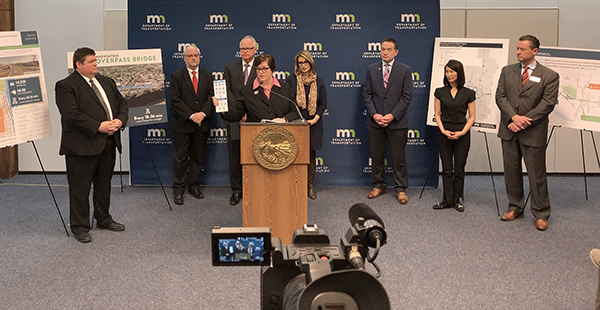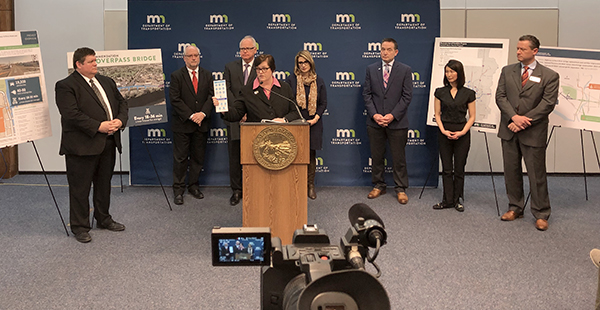
Wells’ Ongoing Struggle: Clarifying Agreements and Pursuing Vital Grants
Recent discussions at the Wells City Council meetings have put a spotlight on the tangled issues and tricky parts of local government operations. The city’s collaboration with the Minnesota Department of Transportation (MnDOT) has hit a snag that mirrors many of the nerve-racking processes faced by municipalities nationwide. In this opinion editorial, we dive in deep into the state of local infrastructure agreements, grant applications, and community projects like the Thompson Park improvement plan—all areas that require the city’s careful attention amid confusing bits and subtle parts.
At its heart, the Wells City Council’s dilemma is about balancing the need for prompt action with due diligence. On one hand, the state is eager to have the cooperative construction agreement signed before the upcoming bid opening. On the other, unresolved questions and unclear provisions in the agreement signal that there are too many complications for the city to absorb without further explanation from MnDOT. This editorial takes a closer look at these challenges, discusses the necessary caution the city must take, and offers insights on finding a path forward for local government collaborations and community enhancements.
Digging into the Confusing Bits of the MnDOT Agreement
The primary source of contention involves several items in the proposed agreement that have raised alarms among city engineers and legal advisors. City engineer Ben Rosol shared that some of the fine points in the document were simply not clear, while state officials expect a signed deal before the project bids are opened on October 22. The city attorney and other officials have weighed in, pointing out that while it seems logical for the state to request a finalized agreement, it’s equally critical that solutions address the city’s concerns.
One notable challenge is the balance between prompt contract finalization and the need to sort out the nerve-racking, intricate details that could have long-term implications. Without clarifications, there’s a risk that the city might be stuck with complicated pieces of the contract that could lead to future misunderstandings or even legal disputes. The stakeholders are now in the process of making sure that all of these subtle parts are ironed out before any final signatures are affixed.
Key Areas of Concern in the Agreement
- Unclear Responsibilities: Who is responsible for addressing specific engineering issues? The document leaves some of these responsibilities ambiguous.
- Financial Implications: There are questions about exact cost-sharing arrangements, which could affect the city’s budget constraints.
- Timeline for Resolution: The state’s deadline forces the city to work quickly, adding an intimidating quota to an already nerve-racking situation.
These bullet points clearly underscore the need for clarity. The city must not only understand every twist and turn of the agreement but also ensure that each confusing bit is thoroughly explained. If the little details are not addressed, they could easily snowball into major issues later on.
Sorting Out Grant Application Challenges Amid Competing Priorities
Another significant point emerging from the Wells City Council meeting was the revisiting of potential grant applications. On one side, there’s a Department of Natural Resources (DNR) grant that now covers the removal and replacement of ash trees—a move directly connected to a growing infestation of the ash borer. Recently updated maps show that Wells falls within an area that might qualify for this competitive grant, which totals almost $4.9 million available across the state.
While the prospect of this grant is promising, the process of applying is not without its intimidating, tangled issues. It requires the city to manage its resources carefully, ensuring that application preparers like Bolton and Menk bring their expertise to bear. The fee for preparing the application, for instance, is estimated at about $3,000—a cost the council believes is a super important investment toward securing funds for critical city projects.
Understanding the Grant Process: A Closer Look
Local grants, such as the one from the DNR and the Local Road Improvement Program (LRIP) grant, provide key avenues for cities to make significant infrastructure improvements even with tight budgets. Here, we break down the essential elements:
- Eligibility Updates: The updated ash borer infestation maps are a game changer, meaning Wells now has a stronger case to meet the eligibility criteria.
- Application Costs: While the costs are not overwhelming, they do require the city to find extra funds upfront—for instance, the $3,000 fee for professional application preparation is a small but super important piece of this puzzle.
- Funding Limits: The LRIP grant offers up to $1.5 million per applicant, but the catch is that applying for such funds often involves a convoluted process that requires meticulous attention to detail.
The state of affairs puts the city in a delicate position: jumping at these opportunities could provide much-needed upgrades to local infrastructure, but it also demands that officials pump serious time into amid an already heavy workload. Such decisions are never taken lightly, especially when budget constraints and timelines mean that every dollar and every minute must be justified.
Embracing Community Improvement: The Thompson Park Master Plan
No recent agenda has generated as much community excitement as the plans for Thompson Park, a local gem that is ripe for rejuvenation. The presented master plan includes moving the softball field to rectify a drop-off issue in the outfield, adding new ADA compliant bleachers, and even installing four pickleball courts—an indication of the city’s desire to cater to a diverse range of interests.
The proposal, which could reach nearly $3 million in total if fully implemented, is deliberately designed to allow phased improvements as funds become available. This gives the city plenty of flexibility to employ a “do-it-as-you-can” approach, meaning that while not every improvement may be carried out simultaneously, each step represents progress towards a more inviting park space.
Breaking Down the Park Proposal: Phased Improvements and Community Impact
The Thompson Park Master Plan is loaded with ideas that aim to provide both recreational and practical benefits for residents. Here are some of the critical components of the proposal:
- Relocation of the Softball Field: This move addresses current safety issues by regrading and reseeding problematic areas, ensuring the field meets regulatory norms.
- Creation of New Recreational Spaces: The addition of pickleball courts, a basketball court, and upgraded playground equipment emphasizes modern recreational trends and fosters inclusivity.
- Paving and Infrastructure Upgrades: Repaving the parking lot, adding more paved pathways, and resolving standing-water problems will not only improve usability but also enhance the park’s overall aesthetics.
- Accessibility Improvements: Installing new ADA compliant bleachers and other accessibility equipment makes the park a welcoming environment for all community members.
In many ways, Thompson Park serves as a microcosm for the community’s broader goals. It shows that even when facing intimidating challenges in city planning and administrative clarifications, local leaders remain focused on the well-being and enjoyment of their residents. Once funding discussions and grant applications are successfully navigated, the park’s transformation could serve as a model for other municipal projects.
Working Through the Road to Funding Success: A Dual-Grant Strategy
During the council discussions, there was also considerable interest in pursuing funding opportunities from two different grant programs simultaneously: the DNR grant for ash tree removal and the LRIP grant for road and street improvements. This dual-grant approach illustrates the city’s proactive stance in getting around the many twists and turns of funding challenges.
Grant applications are often perceived as intimidating and off-putting because of the nerve-racking amount of paperwork and the strict deadlines that come attached to them. Officials must get into the nitty-gritty of each application, ensuring that every small distinction is articulated well to meet funding criteria. The strategy of juggling multiple grants, while complex, is seen as a necessary step in managing the financial demands of a growing and evolving community.
Pros and Cons of a Dual-Grant Strategy
| Advantages | Disadvantages |
|---|---|
| Increases potential funding. | Complicates application processes. |
| Provides financial breathing room for multiple projects. | Requires meticulous coordination between departments. |
| Boosts community improvement efforts simultaneously. | Raises the risk of miscommunication or errors. |
| Creates opportunities for phased projects, reducing upfront expenditure. | Strains city administrative resources during busy periods. |
The table above captures the vegetable-like mixture of benefits and drawbacks when pursuing more than one grant at a time. It is evident that while the rewards are significant, the process is loaded with problems that demand careful management and strategic planning.
Local Airport Expansion: A Cost-Benefit Analysis Amid Competing Priorities
Aside from road and park developments, the Wells Municipal Airport is also in the spotlight. Two separate proposals for the airport apron expansion have been presented, both backed by significant state funding. One option includes a taxilane, while the other focuses on a smaller expansion without one.
Both proposals have compelling financial incentives: the state is willing to cover approximately 90 percent of the total costs. However, according to the council members, even when opportunities like this arise, they can be a bit too nerve-wracking or simply not the right time given current budgetary constraints and other pressing needs. The decision to hold off on these proposals reflects a cautious yet prudent approach, ensuring that any investment made is aligned with other critical community projects.
Comparing the Two Proposals
- Option A: A larger expansion (290 by 80 feet) that includes a taxilane, costing the city slightly more but promising additional functionalities like supporting another hanger and enhanced tie-downs for aircraft.
- Option B: A more modest expansion (265 by 60 feet) without a taxilane, which would be less expensive upfront but might offer fewer operational benefits.
Both options are tactfully designed to harness state support, yet they remind us that every project has its share of tangled issues and fine details. The council’s decision to postpone the expansion reflects their desire to safeguard resources for projects they consider more immediate or essential, an approach that is both cautious and fully in tune with current fiscal realities.
Assessing the Impact of Local Government Decisions on Community Confidence
Local government decisions—especially those involving large funding requests, grant applications, and infrastructure agreements—send strong signals to the community about leadership priorities. When issues such as unclear agreements and intimidating deadlines are addressed through transparent discussions, civic confidence can rise. It tells residents that the city is willing to poke around problematic areas and take the wheel, even when there are scares and nerve-racking factors involved.
The Wells City Council’s decisions, including directing key personnel to apply for both grants and holding back on the airport apron expansion, demonstrate an approach that is both measured and responsive. Instead of rushing to sign off on agreements that are full of confusing bits, the council prefers to sort out the challenges first—even if it means a slight delay in projects or added administrative effort. This careful strategy is essential as it avoids rushing into commitments that could ultimately backfire due to overlooked subtle details.
Community Insights: How Decisions Affect Everyday Life
- Trust in Leadership: Transparent decision-making builds community trust. Residents see that their leaders are not just signing papers but are actively engaged in ensuring all clauses and conditions are clear.
- Efficient Use of Taxpayer Money: By holding off on poorly defined projects, the council minimizes the risk of misallocated funds, ensuring that taxpayer dollars are used in the most effective way possible.
- Long-Term Infrastructure Benefits: Whether it’s improving park facilities or refining transportation agreements, the long-term benefits to community safety and quality of life are immense.
These community benefits, although they may seem incremental at first, snowball into a greater overall improvement in local services and infrastructure over time. The process may be filled with nerve-racking decisions and complicated cooperation between different agencies, but the outcome is a community that is better prepared for future challenges.
Working Through the Nitty-Gritty: Collaboration Between City Departments
One of the more subtle parts of this discussion is the effective collaboration between the different departments involved—engineering, legal counsel, and city administration. The amended resolution that the council approved provides flexibility by letting three key officials work together with MnDOT to address concerns. This cooperation is a shining example of how cities can manage their way through even the most intimidating documents and nerve-racking deadlines.
Instead of working in silos, the council has embraced a teamwork approach that allows legal, technical, and administrative expertise to merge. By making decisions collectively and deferring certain resolutions for future meetings if needed, the city is ensuring that every little nuance is addressed before proceeding. The benefits of such a cooperative approach include:
- Enhanced Accountability: Each department’s input is valued, creating a system of checks and balances.
- Improved Communication: When all the stakeholders are on the same page, the chances of miscommunication drop significantly.
- More Robust Solutions: Combining diverse expertise results in solutions that are well thought out and less vulnerable to future disputes.
This strategy not only helps mitigate the risks of signing off on a document riddled with unresolved questions, but it also sets an example for other municipalities dealing with similar tangled issues.
Overcoming Crunch Time: Balancing Multiple Projects in an On-Edge Environment
Wells is currently juggling multiple projects—from the MnDOT agreement and grant applications to park improvements and airport expansions. Each of these projects comes with its own set of intimidating deadlines and nerve-racking details. The overlapping timelines create an environment that is, quite literally, on edge.
For city officials, the challenge is not only about managing each project individually but also about finding ways to coordinate them without burning out resources or sacrificing quality. Here are some strategies the council is using to manage this multifaceted workload:
- Prioritization: Projects are assessed based on urgency and community impact, ensuring that immediate needs are addressed while long-term projects are paced appropriately.
- Delegation: By designating specific teams to address particular proposals (such as grant applications versus infrastructure maintenance), the workload is distributed evenly across departments.
- Regular Monitoring: Periodic reviews allow for course corrections—if a project’s timeline is delayed due to unforeseen issues, the impact can be mitigated by reallocating effort and resources.
This systematic approach is super important in an environment where multiple, unrelated projects share the same pool of funds and manpower. While the process might include a lot of nerve-wracking moments and may feel overwhelmed at times, the city’s strategy is geared toward ensuring that no project is left behind.
Learning from Past Experiences: The Importance of Transparency and Accountability
The challenges Wells faces are not unique. Municipal governments throughout the country have encountered similar tangled issues when dealing with large-scale public works projects and funding opportunities. One common lesson is the critical importance of transparency.
Transparency means that city officials must be upfront about the problems they encounter in negotiation documents and in the grant application process. This openness not only builds trust among residents but also creates a culture where constructive criticism is valued. When the community sees that leaders are willing to admit that certain aspects of a project are still in need of resolution, it generates patience and understanding.
Accountability, on the other hand, is demonstrated by ensuring that all decisions are documented and that responsibility for unresolved issues is clearly assigned. This approach minimizes the risk of hidden complexities later on and ensures that if problems do arise, there is a clear trail that explains how decisions were made. In practice, this means:
- Public Meetings: Regular council meetings where the community can ask questions and receive updates firsthand.
- Detailed Reports: Written summaries, like the engineering and legal reports seen in recent meetings, which outline the issues in detail.
- Follow-Up Mechanisms: Establishing clear timelines and conditions under which unresolved issues will be revisited.
By ensuring these processes are in place, the city not only manages its current projects better but also builds a template for dealing with similar situations in the future—a critical step that any municipality must take when operating in a landscape filled with both promising opportunities and intimidating bureaucratic challenges.
Future Outlook: Building a Resilient Community Through Proactive Measures
The recent developments in Wells serve as a reminder that proactive, transparent government is essential to building a resilient community. By taking the time to work through confusing bits and tackling the nitty-gritty details of each project, the leadership is setting the stage for a future where local governance is seen as both responsible and forward-thinking.
Looking ahead, several key trends are emerging that could positively impact Wells and other similarly sized cities:
- Improved Funding Opportunities: As state budgets and grant programs evolve, there will be more avenues for local governments to secure funds for infrastructure improvements and public services.
- Technological Integration: Advances in technology could help streamline grant applications and contract negotiations, reducing the nerve-wracking amount of paperwork and time involved.
- Community Engagement: Increased transparency and public participation in local government processes will likely enhance overall community confidence and support for municipal decisions.
Local governments that can successfully sort out their path through these challenges will be the ones that stand out as leaders in public administration. Wells, with its careful review of the MnDOT agreement, proactive pursuit of multiple grants, and strategic planning for community projects like Thompson Park, is showing signs of emerging as one such leader.
The Broader Implications: How Small Municipalities Can Thrive in a Web of Tangles and Timing
While the individual issues faced by Wells may appear to be a microcosm of broader municipal challenges, their resolution offers important lessons for many small cities across the nation. Missteps in clarifying contracts or delays in grant applications can have far-reaching consequences if not properly addressed. Conversely, a meticulous approach that emphasizes clarity, accountability, and cooperation can serve as a template for success.
By tackling each twist and turn with care—whether it’s clarifying complicated contractual language or managing funding applications in an on-edge environment—small municipalities can find their way through even the most nerve-wracking challenges. The key is to remain patient, involve all relevant stakeholders, and never lose sight of the community’s long-term needs.
It is critical to remember that the path to successful public administration is rarely straightforward. It is filled with tricky parts, tangled issues, and subtle details that can seem overwhelming at times. However, by embracing transparency, fostering collaboration, and staying committed to community engagement, cities like Wells can transform challenges into opportunities for growth and enhanced community trust.
Final Thoughts: A Balanced Approach for a Sustainable Future
In conclusion, the recent efforts by the Wells City Council reveal a balanced approach to addressing multiple, interconnected challenges. Whether it’s clarifying the confusing bits in a state agreement with MnDOT, navigating nerve-racking grant applications, or executing a master plan to rejuvenate community spaces like Thompson Park, the city is carefully managing its priorities amidst several competing demands.
The council’s decision to allow flexibility in the contractual process, jointly pursue critical grants, and postpone less urgent projects like the airport apron expansion reflects their clear understanding of the community’s best interests. This isn’t just about avoiding immediate pitfalls—it’s about constructing a foundation that makes it easier to steer through future challenges.
For residents, these decisions signal a commitment to responsible governance. The willingness to delay action until all the fine points are worked out (rather than rushing into potentially problematic agreements) reinforces the idea that thorough, transparent decision-making can lead to a stronger, more sustainable community over time.
The ongoing dialogue between city officials, state agencies, and the public is essential for rebuilding trust in local governance. Wells’ approach—one that involves digging into each twist and turn, managing resources wisely, and prioritizing long-term benefits—offers a roadmap for other municipalities facing similarly intimidating and complicated challenges.
As cities continue to encounter a web of tangled issues and nerve-racking deadlines, it becomes increasingly important to take a balanced approach that values patience, cooperation, and careful planning. With eyes set on a future where every decision is made with community benefit at heart, local governments can truly transform short-term challenges into lasting improvements that resonate for years to come.
Ultimately, the story of Wells is one of resilience—a reminder that even in the face of indefinite complexities, communities can thrive through a proactive, inclusive approach that respects both the big picture and the finer details that make up our everyday lives.
Originally Post From https://www.faribaultcountyregister.com/news/local-news/2025/10/19/wells-needs-mndot-clarification/
Read more about this topic at
City officials seek clarity on downtown project and land …
Mount Vernon’s Historical Review Commission denies …


